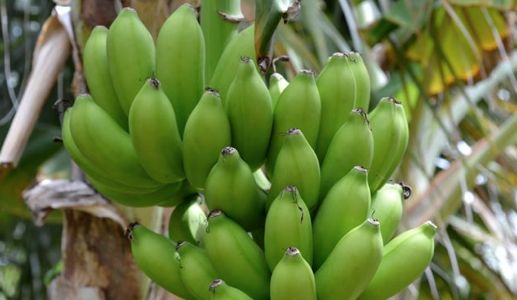Fortunes Change With Tissue Culture Banana
 A vibrant relationship binds the counties of Meru, Embu, Kirinyaga and Murang’a. The counties are all Tissue Culture Banana (TCB) growing regions and are also beneficiaries of support and funding from the Alliance for Green Revolution in Africa (AGRA). Most farmers from these regions are also members of farmer groups that are affiliated to the Banana Growers Association of Kenya.
A vibrant relationship binds the counties of Meru, Embu, Kirinyaga and Murang’a. The counties are all Tissue Culture Banana (TCB) growing regions and are also beneficiaries of support and funding from the Alliance for Green Revolution in Africa (AGRA). Most farmers from these regions are also members of farmer groups that are affiliated to the Banana Growers Association of Kenya.
"At the time of the introduction of TCB in the late 1990s, research institutes were the only source of the new banana and there was no real sustainable supply system in place," says Margaret Mburugu, a successful Meru banana farmer, adding that this limited supply rendered tissue culture banana plantlets far too expensive for the ordinary low-input farmer.
Prior to tissue culture banana, farmers used suckers from the mother-plant to propagate their crop. However, that is now outdated. With the entrance of AGRA into the banana farming scene, financial support channeled through Kenya National Farmers Federation (KENAFF), saw the introduction of nurseries and demonstration farms into the four main banana regions of Murang’a, Kirinyaga, Embu and Meru.
"We cannot get anywhere without technology, and tissue culture is one technology which is rapidly spreading not only in Kenya but Africa," says County Director of Agriculture, Stanley Mworia. He says his office complements the support by AGRA through KENAFF to train farmers on how to grow the crop in order to realise their full potential and help create markets for the produce.
In the four counties, farmers are actively growing bananas at the expense of traditional staples with success. For Margaret Mwari and Gerald Mutua from Meru County, profitable farming began in 1997 after introduction of tissue culture bananas. With yields of up to four times that of traditional varieties and guarantee of harvesting 80 per cent of the crop, TCB has changed the fortunes of the two farmers from subsistence to successful commercial entrepreneurs, trainers and farmer group leaders.
Farmers across all the counties have success stories on how banana farming has transformed their economic lives. A visit to their homes reveals the transformation. Before adopting TCB, Mburugu grew traditional varieties, which she sold for as little as Sh100 for a large banana bunch. She also did subsistence farming of maize, beans and sweet potatoes. "We were content with what we earned, we didn’t know the difference," she says.
Intervention by the Kenya Agricultural Research Institute (Kari) and Africa Harvest changed that. She was one of the first 15 TCB farmers, starting with 120 TCB plantlets. Today, she has over 3,000, earning over Sh500,000 per year. According to Meru County Director of Agriculture Dionisia M’eruaki, a 2008 research by the Ministry of Agriculture indicated that 60 per cent of stalls in fresh market centres, villages and towns selling fresh produce stock bananas.
"What this means is that farmers who venture into banana farming are likely to earn more compared to other fruit farming since banana production is year round," says the director. He says it is scientifically proven that the average hectare yield for tissue culture bananas is 30 to 40 tonnes per year, earning more than Sh1 million, almost twice the yield from normal breeds.
This is probably the reason why there has been an increase in the number of farmers going into banana farming in the four counties. The farmers, however, highlight a number of challenges ranging from poor infrastructure, pricing and marketing to pests and diseases, soil fertility, and value addition. On the other hand, interventions have been put in place and agricultural officials, through extension officers, have accorded the necessary help to the farmer groups. Training has improved handling of the produce.
One aspect that highlights the determination of the banana farmers across the region is their willingness to be part of the support and funding from the donors. For instance, they have donated space for nurseries and demonstration farms. AGRA funded only the initial construction and seedlings, but the farmers have put in place methods of expanding the original project by turning around the funded venture into an economic one. Money collected from the sale of the seedlings and demonstrations is ploughed back to buy more seedling and maintenance of the demo farms.
"Today, the homesteads of the hosts of the nurseries and demo farms are beehives as farmers stream in for training, demonstrations and to buy TCB plantlets," says Mburugu. "After they saw my success that drew international visitors, more farmers began growing them." Her success has landed her invites to agricultural conferences in South Africa and Kampala to share her story and expertise with continental farmers. According to AGRA programme officer Pauline Kamau, working with farmer groups is one of the ways the organisation can reduce food insecurity and double incomes for 20 million smallholder farmers in at least 20 countries. - By CHERI JAYNE (ThePeople)
